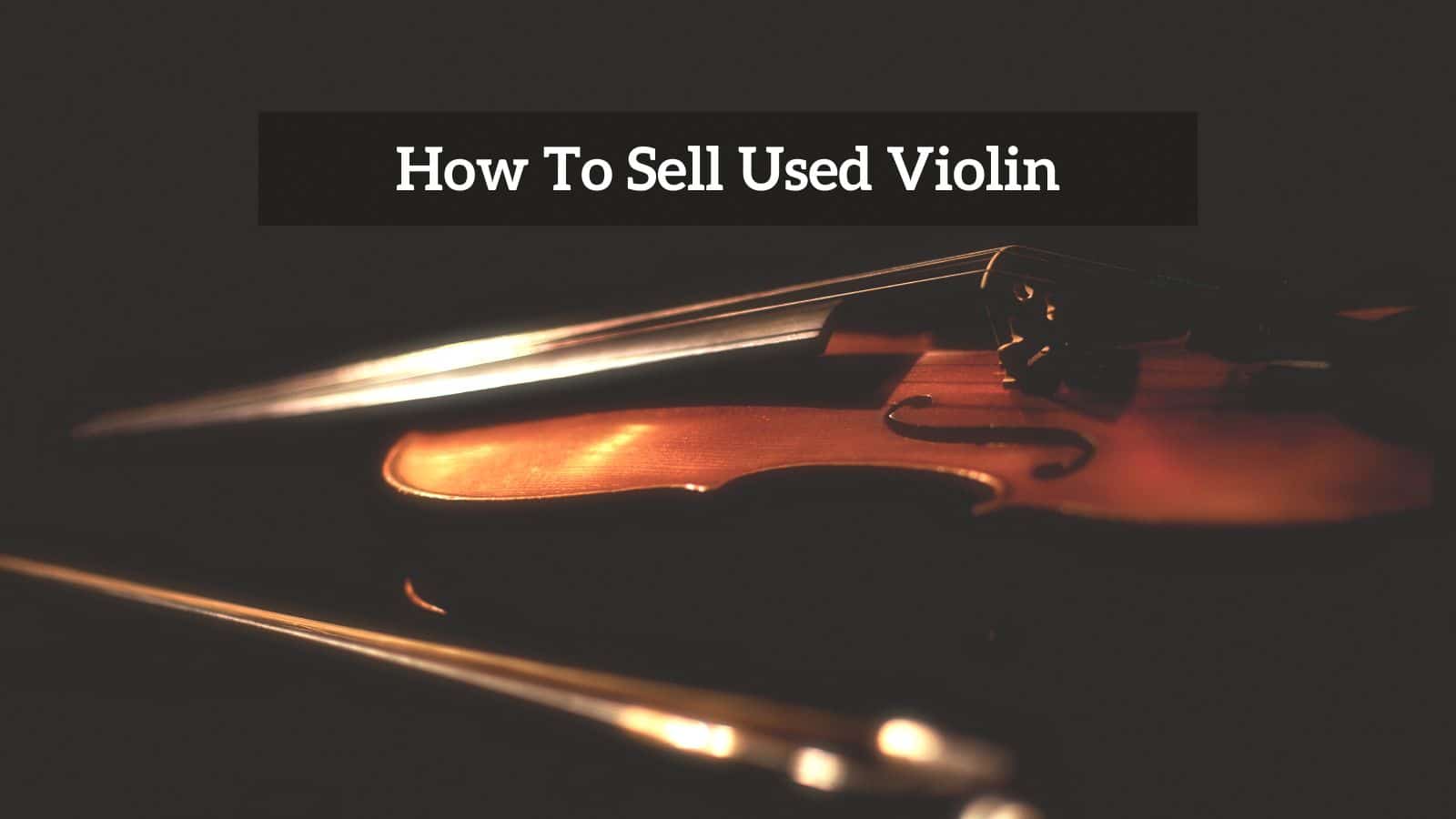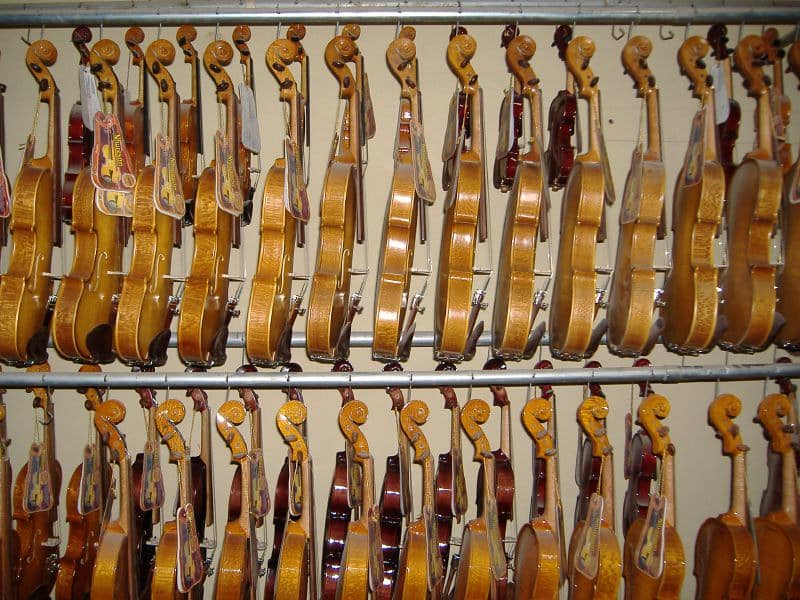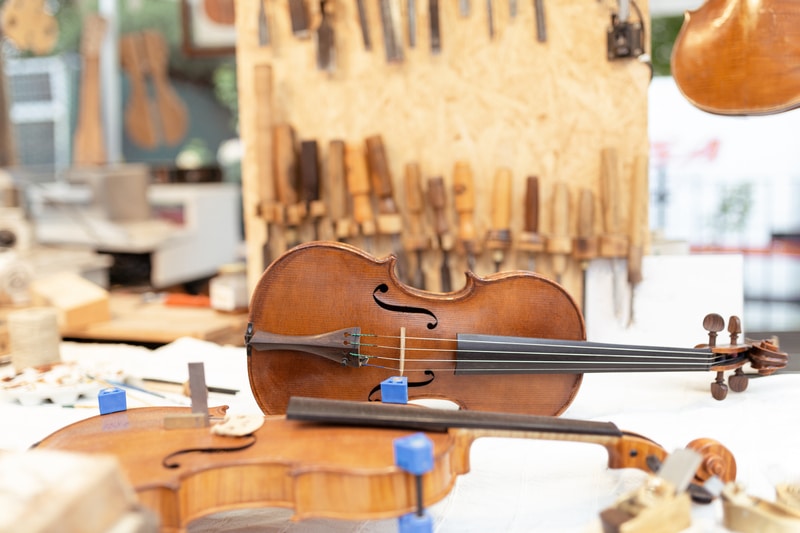
You may have an old violin sitting in any corner of your house that nobody plays anymore. Or perhaps you just want to sell your current instrument and buy a new one.
If you want to make some profit and get the best deals, you must know where and how to sell it. To help you take the best decision, we elaborated a small guide with important things you should know before selling your instrument.
How To Sell Used Violin
Value
In order to get the best deal out of a sale, you first need to know how much your instrument is worth. You may think you got a good offer to later find your instrument was actually worth much more than you imagined.
Or you will be surprised that your instrument is worth much less than you expected. If you do not have enough knowledge to evaluate instruments, the first thing you should do is to seek advice from a professional player and a luthier.
In this article we can give you a overview, but be aware that prices can vary a lot from region to region and country to country.
The first thing to know is that there are basically two types of instrument: factory-made and handmade.
Factory-made instruments lose market value as they leave the shop, and their prices decrease as the time goes by. They are usually made with average quality woods.
Handmade instruments normally keep their prices or are worth even more as they age, as the violin maker selects the best woods and ensures perfect crafting from beginning to the end of the making process.
That is why old violins from the seventeenth and eighteenth-century can be worth thousands or even millions of dollars, namely those made by the Stradivarius family. But, how can you know if your violin was handmade or factory made?
Identifying your instrument
First, if you bought it brand new from a shop with new packaging and accessories, it is probably a factory instrument.
Second, you can check the label inside and do a quick search online, but do not be fooled: if your violin is labeled Stradivarius, it is probably one of the thousands of handmade copies not worth more than some hundred dollars or a few thousand dollars.
If there is not label inside it is also likely to be a handmade instrument. The next step is to take the instrument to a professional violin maker, who can be found through some local violin shops.
A professional player can also give some estimates, but he will not have the expertise to tell the exact price of the instrument. The player can, at least, judge the sound quality of the instrument, and if the results are outstanding, the price can be increased a little.
Notice: factory-made instruments are normally sold with all the original accessories, including rosin, bow and shoulder rest. The price given includes all these extras.
Handmade violins do not accompany accessories, but, if you have a bow, you should know that it will be appraised separately and can also be worth some good money.
Adjustments
If your instrument is not very well adjusted or suffered any damage, the price will be consequently affected.
You should tell the buyer about the problems you found or you can agree to send it to a violin repairer who will fix it for you. Be aware that the cost of repairing a broken factory instrument may be greater than buying a new instrument.
Price range
Although this is a very generic piece of advice, you should know that used factory instruments can range from anywhere between US$50 to US$500, depending on brand, quality and condition.
Handmade instruments can start from $500 and reach many thousands of dollars. As we mentioned before, only a specialist will be able to tell the price correctly.
Also, be aware that you may receive very different appraisal values depending on the country or region you intend to sell your instrument.
Advertising
After finding the exact price you should sell it for, it is time to do some advertising. Take high quality photos of your instrument from all angles.
Do not forget to take very good pictures of the scroll: this part is crucial to define the price of a good instrument as the crafting skills of the maker are easily shown in the scroll. However, this is not so important when it comes to factory instruments.
You can ask a professional player to play it for you as you take good recordings of it. Next step is to find the platform where you will advertise the instrument.
Here is a list of some of the most common places you should be aware of, which may or may not be the best option for you depending on where you live:
- Ebay, Amazon, or other local websites;
- Social media like Facebook or Instagram;
- Local classified ads;
- Music schools;
- Local music shops.
Be aware that local shops tend to buy your instrument for a cheaper price than its original appraised value as they depend on reselling it to make some profit out of it. However, you can get good deals in case you want to trade your instrument for a better one.
In all cases make sure to write a good description, including data like age, for how long it was used, brand and model, condition and price.
Scams
Unfortunately there are scams everywhere. If you consider selling your instrument online make sure you use a legit platform or receive payments upfront.
You do not need to risk losing hundreds or even thousands of dollars by not taking some safety measures. Do not trust anyone who asks to buy your instrument outside the online platform for a higher price.
Shipping
If the buyer lives in a different region, you should be aware of the high costs of shipping. You should also make sure you wrap the instrument very well to avoid any kind of accidents.
In most cases you are considered responsible for the instrument until it arrives the buyer. If you are selling a very expensive instrument, consider insurance for shipping.
Waiting time
Do not expect to sell your instrument soon. Depending on how much it is worth and the number of violinists in your region, you may need to wait days or months before you can successfully receive a serious offer.
Consider donating
Many music schools accept donations of instruments to help students who can not afford them. You can do a good action and be sure that you are helping a kid who needed support.
And remember, if you have absolutely any questions, do not hesitate to contact your local luthier.


